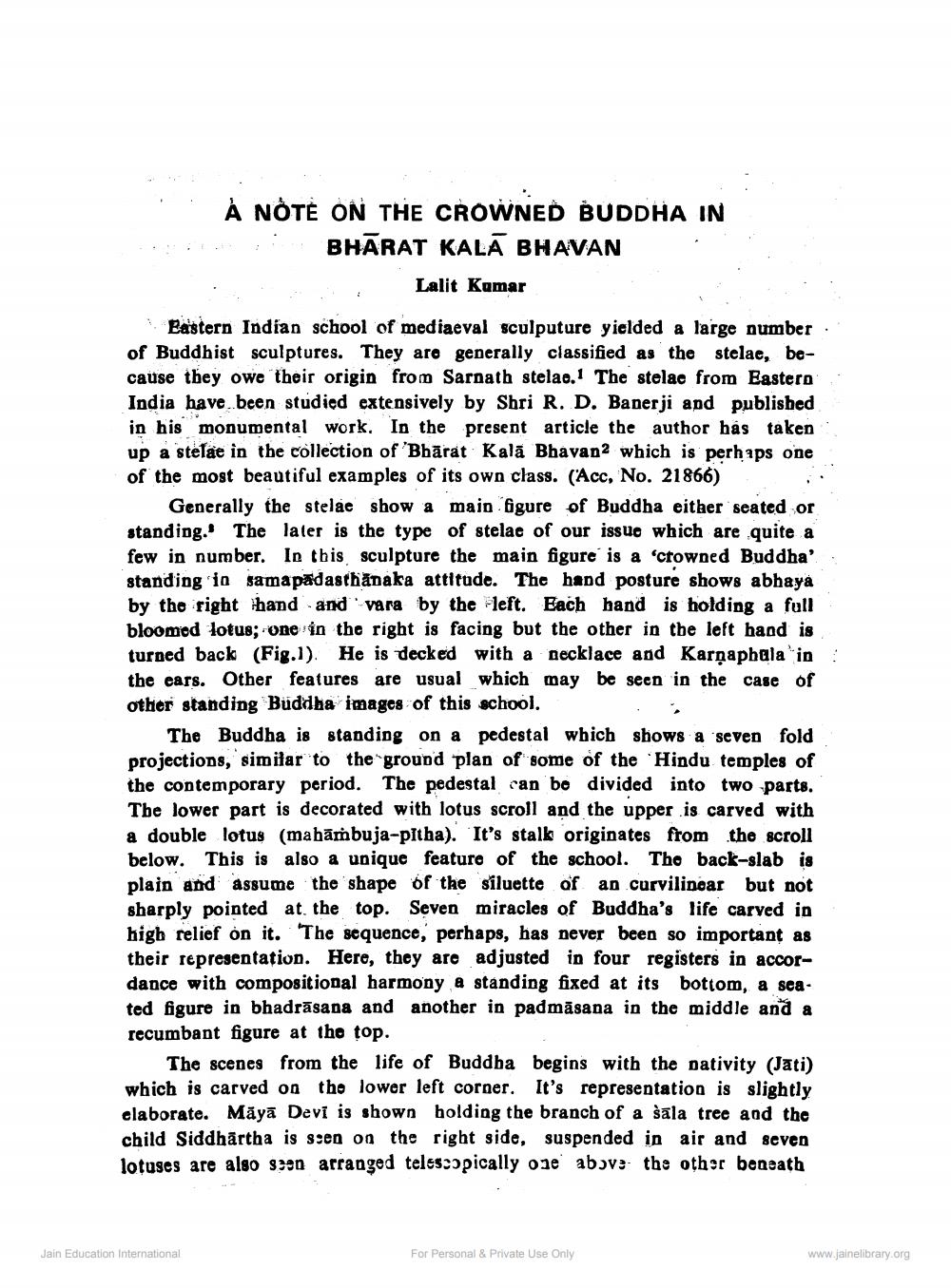________________
LÀ NÔTÉ ON THE CROWNED BUDDHA IN ili BHARAT KALĀ BHAVAN :
Lalit Kumar
Eastern Indian school of mediaeval sculputure yielded a large number. of Buddhist sculptures. They are generally classified as the stelae, because they owe their origin from Sarnath stelao. 1 The stelae from Eastero India have been studied extensively by Shri R. D. Banerji and published in his monumental work. In the present article the author has taken up a stelae in the collection of 'Bhārat Kalā Bhavana which is perhaps one of the most beautiful examples of its own class. (Acc, No. 21866)
• 41000) Generally the stelae show a main figure of Buddha either seated or standing. The later is the type of stelae of our issue which are quite a few in number. In this sculpture the main figure is a 'crowned Buddha' standing jo samapadasthanaka attitude. The hand posture shows abhaya by the right hand and vara by the left. Each hand is holding a full bloomed lotus; one in the right is facing but the other in the left hand is turned back (Fig.1). He is decked with a necklace and Karşaphala in: the ears. Other features are usual which may be seen in the case of other standing Buddha images of this school. . i
The Buddha is standing on a pedestal which shows a seven fold projections, similar to the ground plan of some of the Hindu temples of the contemporary period. The pedestal can be divided into two parts. The lower part is decorated with lotus scroll and the upper is carved with a double lotus (mabāmbuja-pitha). It's stalk originates from the scroll below. This is also a unique feature of the school. The back-slab is plain and assume the shape of the siluette of an curvilinear but not sharply pointed at the top. Seven miracles of Buddha's life carved in high relief on it. The sequence, perhaps, has never been so important as their representation. Here, they are adjusted in four registers in accordance with compositional harmony a standing fixed at its bottom, a seated figure in bhadrāsana and another in padmāsana in the middle and a recumbant figure at the top.
The scenes from the life of Buddba begins with the pativity (Jati) which is carved on the lower left corner. It's representation is slightly elaborate. Māyā Devi is shown holding the branch of a šāla tree and the child Siddhārtha is sien on the right side, suspended in air and seven lotuses are also 939n arranged telss=opically one abyv: the other beneath
Jain Education International
For Personal & Private Use Only
www.jainelibrary.org




